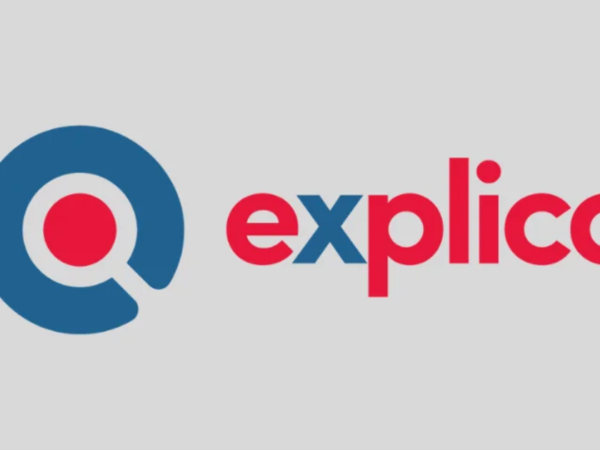Introduction
For a time, Applied Behavior Analysis (ABA) therapy has been a method for supporting individuals with autism spectrum disorder (ASD) and other developmental difficulties. While ABA is known for its success in encouraging behaviors and reducing ones, its impact can be significantly improved through partnerships with educators. This article delves into the advantages of an approach, tips for working together, and how joining forces can positively change learners’ outcomes.
The Significance of Collaboration in ABA Therapy
Collaboration between ABA professionals and educators is important for several reasons. Educators provide insights into the child’s routines, surroundings, and social interactions, offering a well-rounded view of the child’s requirements. This information is crucial in customizing ABA techniques that seamlessly fit into the environment.
Moreover, collaboration promotes consistency across settings. Children with ASD often benefit from behavior management methods, especially when these strategies are aligned. By collaborating, ABA therapy practitioners and educators can harmonize their approaches, facilitating the transfer of skills learned during early intervention ABA therapy to school settings. This consistency fosters retention of skills and behaviors, ultimately supporting the child’s growth in various environments.
Additionally, collaboration contributes to the growth of both educators and ABA practitioners.
When they share their expertise, they broaden their range of strategies and deepen their understanding of each other’s fields. This exchange of ideas can spark innovative practices that benefit all students.
Building Strong Collaborative Bonds
To make the most of collaboration, fostering relationships among ABA therapists, educators, and other key players is crucial. Here are a few steps to nurture partnerships:
1. Effective Communication
Establishing lines of communication is essential for any collaboration. Regular meetings—whether face-to-face via video calls or through email—facilitate discussions about the student’s progress, challenges, and tactics. This continuous exchange of information ensures everyone is aligned and working towards shared objectives.
2. Setting Concrete Objectives
Having goals is vital for collaboration. Educators and ABA therapists should collaborate on defining goals for the learners. By creating these objectives, both parties can develop an approach to teaching and intervention that boosts accountability and fosters achievement.
3. Clarifying Roles and Responsibilities
A thriving collaborative partnership hinges on outlining roles and responsibilities. Each partner should grasp their contributions to the team. While ABA therapists typically focus on behaviors and intervention approaches, educators oversee the curriculum and classroom dynamics. Clearly defining these roles helps streamline efforts and avoid any confusion or duplication of tasks.
4. Continual Training and Professional Development
Training and professional development are essential for educators and ABA therapists to maintain effectiveness. They should engage in training sessions and educational activities related to each other’s practices. This could involve participating in workshops, conferences, or specialized courses that explore the intersection of ABA and education. These learning opportunities enable professionals to stay current with practices and new research findings, benefiting the children under their care.
Strategies for Collaborative Implementation
For implementation, specific strategies are needed to ensure consistency and effectiveness. Here are some proven practices that can promote collaboration:
1. Integration of ABA Techniques in Classroom Settings
Educators who have received training in ABA methods can incorporate these approaches into their teaching routines. By utilizing reinforcement strategies in the classroom, educators can help support the ABA goals established for each student. This may involve implementing economies, visual schedules, or prompting techniques to encourage desired behaviors while minimizing ones.
2. Monitoring Progress and Data Collection
A collaborative aspect is a shared commitment to tracking progress and collecting data. Regular data collection allows ABA therapists and educators to monitor students’ progress toward achieving their goals. This information can be analyzed together to make decisions and adjust strategies. For example, if a specific behavior isn’t improving, the team can change its approach.
3. Developing personalized Education Plans (IEPs)
Another way to collaborate is to create IEPs that incorporate ABA principles. These plans should encompass both behavioral goals to ensure the child’s needs are met comprehensively. By working on the IEP process, educators and ABA therapists can establish goals and outline a path to success.
4. Promoting Peer Support and Social Skills Development
Peer interaction plays a role in the growth of children, especially those with ASD. Through initiatives, educators and ABA therapists can create opportunities for peer involvement, such as group activities or inclusive classroom environments. Additionally, targeted social skills training can help teach interactions and communication strategies.
Success Stories of Collaborative Efforts
Reviewing real-life success stories can showcase how collaboration enhances the effectiveness of ABA therapy. Here are some examples:
Success Story 1: Integrating ABA in a Preschool Environment
In a setting, an ABA therapist collaborated closely with the classroom teacher to address the needs of a child with ASD exhibiting behaviors. They worked together to create a plan to help manage behavior, focusing on personalized methods for calming and encouraging social interactions. Throughout the school year, the child showed instances of aggression, interacted more with peers, and communicated better. The teacher and therapist met regularly to review progress and make adjustments when necessary, proving that their teamwork was successful.
Case Study 2: Cross-Training Educators and Therapists
In another scenario, a school district introduced a program where therapists trained teachers on ABA principles through workshops. These sessions gave educators an understanding of ABA and how to apply it effectively in their classrooms. This has kept teachers’ confidence in using ABA techniques. Also deepened their awareness of the challenges faced by students with ASD. Consequently, teachers felt more prepared to assist their students, leading to improved behavioral results.
Challenges and Solutions
While collaboration has advantages, it also comes with its set of difficulties. Challenges, like conflicting methods, differing priorities, or communication issues, may surface. Nonetheless, these hurdles can be tackled with a problem-solving approach.
Resolving Conflicts
When disagreements arise, it’s essential to address them positively. Using listening skills and keeping the child’s interests in mind can help resolve conflicts in a friendly manner. Regular team meetings also provide a platform for discussing challenges and developing solutions.
Time Management Challenges
Juggling the responsibilities of teaching and therapy can be overwhelming for everyone involved. To tackle this, schools can schedule planning sessions during their development days. Allocating time for educators and therapists to meet ensures that collaboration is given importance rather than being an afterthought.
Wrap up
The collaborative effort between ABA therapists and educators is a tool for enhancing the effectiveness of Move Up ABA therapy for children with ASD. Building partnerships based on communication, shared objectives, and mutual respect helps create learning environments that promote student growth and success through a commitment to collaboration. Stakeholders enhance learners’ outcomes and contribute to a more inclusive and supportive educational setting. Embracing this partnership will enrich experiences and more outstanding accomplishments for the children under our care.











